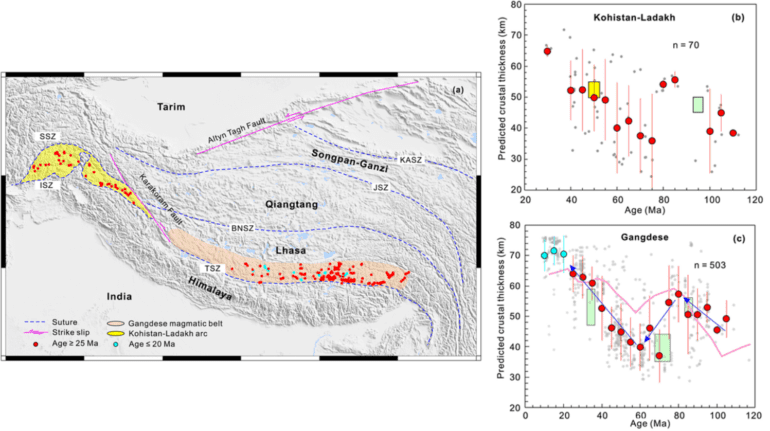TL;DR:
- Conventional methods for measuring crustal thickness rely on geochemical proxies, which may not be reliable in regions with anomalously thick crust.
- Guo and Yang trained a machine learning algorithm on a large dataset of geochemical and geophysical data to quantify crustal thickness.
- The machine learning model accurately predicted crustal thickness in regions associated with subduction or continental collisions.
- Results from the machine learning model aligned well with data obtained from geochemical proxies.
- Machine learning-based models offer promising potential for studying the evolution of the Earth’s crust.
Main AI News:
The study conducted by Guo and Yang in 2023 focuses on the use of machine learning algorithms to constrain the thickness of ancient crust. Traditional methods of quantifying crustal thickness rely on geochemical proxies that are sensitive to certain minerals, such as garnet, which are only stable in areas with a thick crust. However, these proxies may not be reliable in regions with an anomalously thick crust, such as in continental collisions.
To overcome these limitations, Guo and Yang employ a machine learning approach. They train a machine learning algorithm using a large dataset of geochemical information and crustal thickness data obtained from geophysical surveys. By feeding this dataset into the algorithm, the model learns patterns and relationships between the geochemical data and crustal thickness measurements.
The researchers then apply this trained machine learning model to several regions with thick crusts associated with subduction or continental collisions, including the Kohistan-Ladakh arc in Pakistan and the Talkeetna arc in Alaska. They compare the results obtained from the machine learning model with the data derived from geochemical proxies.
The findings of the study indicate that the machine learning-based approach aligns well with the geochemical proxy data. This suggests that the machine learning model successfully captures the complex relationships between geochemical signatures and crustal thickness. The authors conclude that machine learning-based models trained on large geochemical and geophysical datasets hold promise as tools for future studies on the evolution of the Earth’s crust.
Conclusion:
The use of machine learning algorithms to constrain the thickness of ancient crust represents a significant advancement in the field. By leveraging large datasets and capturing complex relationships between geochemical signatures and crustal thickness, these models provide valuable insights into crustal evolution. From a market perspective, this research opens up opportunities for improved exploration and understanding of geological features, which can have implications for resource exploration, geotechnical engineering, and environmental assessments. The application of machine learning in geosciences has the potential to drive innovation and provide valuable tools for companies operating in the energy, mining, and infrastructure sectors.

